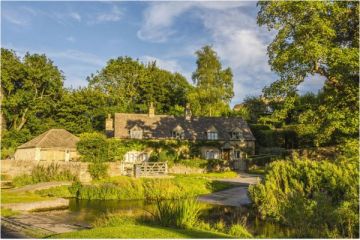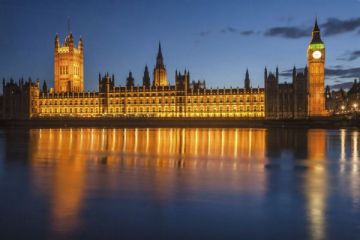WC2
An imposing riverside development of 24 terraced houses designed and built by John, Robert, James and William Adam. (Adelphoi being Greek for brothers.) The 3-acre site had formerly been the grounds of Durham House, which was demolished after the Restoration when a network of courts was built there.
By the mid-18th century the area had become a slum and most of the buildings were in ruins. In 1768 the Duke of St Albans granted the brothers a 99-year lease on the site for £1,200 per annum and work began. Large numbers of Scottish labourers were brought in to work on the site at a cheap rate and bagpipes were played daily. A series of arches and subterranean streets was built to counteract the slope from the Strand to the river.
In 1771 Parliament passed an Act giving permission for the river to be embanked, thus crushing the opposition of the Corporation of London who claimed the riverbed. Walpole asserts the decision was due to the King’s influence:
For Scotchmen, by the name of Adams
Who keep their coaches and their madams,
Quoth John in sulky mood to Thomas
Have stole the very river from us.
O Scotland, long has it been said
Thy teeth are sharp for English bread
What seize our bread and water too
And use us worse than jailors do;
’Tis true, ’tis hard; ’tis hard, ’tis true.
Ye friends of George, and friends of James,
Envy us not our river Thames;
The Princess, fond of raw-boned faces,
May give you all our posts and places;
Take all to gratify your pride
But dip your oatmeal in the Clyde.
In 1772 the building of houses began. No expense was spared. Some of the best painters and craftsmen of the time worked on the interiors including Angelica Kauffmann, Cipriani and Zucchi. The brothers ran into financial difficulties. The Government refused to lease the cellars for storing gunpowder because they flooded at high tide; and the development was remote from the fashionable West End.
In 1773 an Act was passed allowing a lottery to be held to raise money to complete the scheme. The lottery was held the next year at Jonathan’s Coffee House, Change Alley. There were 4,370 tickets costing £50 each, for 108 prizes. Thus the Adams remained precariously solvent.
Soon afterwards the development was complete. Its centrepiece was the Royal Terrace, later known as Adelphi Terrace, of 11 houses which was presented as a 41-bay architectural unit with unifying central and flanking pilasters. On each side were adam street and Robert Street and, behind, John Street, James Street and William Street.
In 1864–70 the Victoria Embankment was built in front of the Terrace, depriving it of its riverside position. In 1867 the Adelphi Vaults were ‘in part occupied as wine cellars and coal wharfs, their grim vastness, a reminder of the Etruscan Cloaca of Old Rome’. Here, according to Tombs, ‘the most abandoned characters have often passed the night, nestling upon foul straw; and many a street thief escaped from his pursuers in these dismal haunts before the introduction of gaslight and a vigilant police’.
These vaults can still be seen in Lower Robert Street off York Buildings. In 1872 the Royal Terrace lost much of its charm when its facade was cemented over and its wrought-iron balconies were removed. The arches were also underpinned.
In 1936–8 the Royal Terrace block was demolished and replaced by a building by Colcutt and Hamp, shamelessly called Adelphi and sporting bold zodiacal symbols. The streets have been renamed and renumbered several times. John Street and Duke Street now form John Adam Street and James Street and William Street are now named Durham House Street. Only a few of the original houses remain, one of the most attractive being No. 7 Adam Street and the others comprising the royal society of arts in John Adam Street.
The Adelphi concept was shortly afterwards imitated by the Adams’ staid rival, Sir William Chambers, at Somerset House with its raised riverside terrace. Like the concept, the word ‘terrace’ as used for an architectural frontage comprising a row of several houses seems to have been pioneered by the Adam brothers at the Adelphi.
See also:
Robert Adam biography
Excerpted from The London Encyclopaedia by kind permission of the Publishers, Pan MacMillan.



